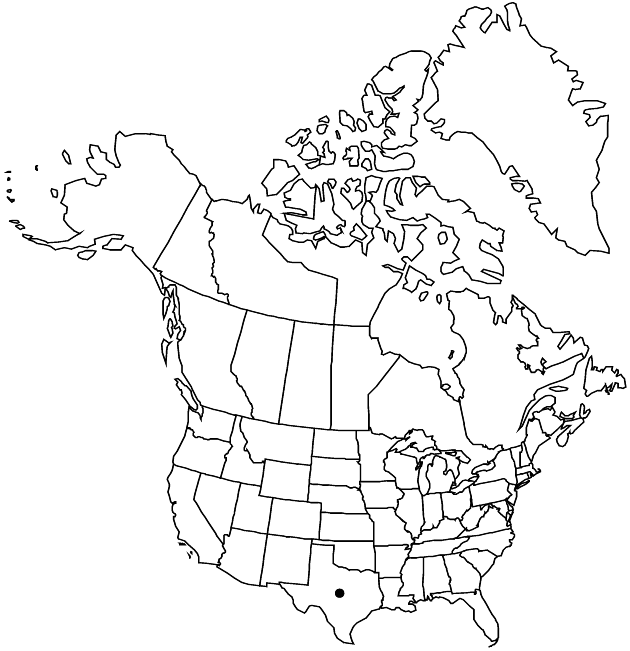Difference between revisions of "Bahia bigelovii"
in W. H. Emory, Rep. U.S. Mex. Bound. 2(1): 96. 1859.
FNA>Volume Importer |
FNA>Volume Importer |
||
| Line 46: | Line 46: | ||
|publication year=1859 | |publication year=1859 | ||
|special status= | |special status= | ||
| − | |source xml=https://jpend@bitbucket.org/aafc-mbb/fna-data-curation.git/src/ | + | |source xml=https://jpend@bitbucket.org/aafc-mbb/fna-data-curation.git/src/f6b125a955440c0872999024f038d74684f65921/coarse_grained_fna_xml/V19-20-21/V21_963.xml |
|tribe=Asteraceae tribe Heliantheae | |tribe=Asteraceae tribe Heliantheae | ||
|subtribe=Asteraceae (tribe Heliantheae) subtribe Chaenactidinae | |subtribe=Asteraceae (tribe Heliantheae) subtribe Chaenactidinae | ||
Revision as of 18:51, 24 September 2019
Annuals, 10–30+ cm. Stems mostly erect. Leaves all or mostly opposite (distal sometimes alternate); blades simple or 1–2-ternately lobed, lobes filiform to linear, 10–25(–50+) × 0.5–1(–2+) mm, faces sparsely scabrellous, usually gland-dotted as well. Involucres 3–4+ × 7–9+ mm. Ray florets 5–9(–13+); corolla laminae 4–5+ mm. Disc florets 25–50+; corollas 1.5–3 mm. Cypselae 2–3.5+ mm, faces ± hirtellous; pappi of ± ovate to quadrate, apically ± muticous scales 0.5–1 mm. 2n = 22.
Phenology: Flowering Jun–Oct.
Habitat: Sandy soils
Elevation: 1500–1900 m
Discussion
Selected References
None.
Lower Taxa
None.
